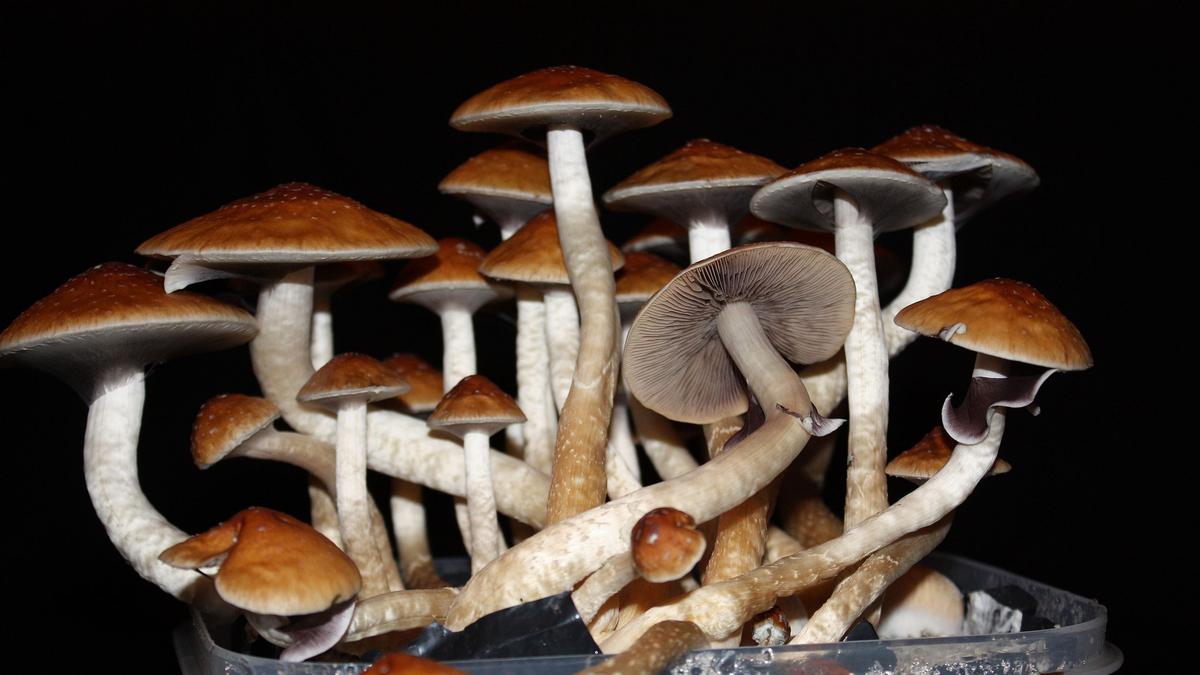
Explained | Can psychedelic treat depression? A doctor explains. Premium
The Hindu
Psychedelic drugs, while banned in India, are emerging in research as promising ways to treat treatment-resistant depression and stress disorders.
Psychedelics are a group of drugs that alter perception, mood, and thought-processing while a person is still clearly conscious. Usually, the person’s insight also remains unimpaired. Psychedelics are non-addictive and non-toxic. Compared to illicit drugs, psychedelics cause much less harm to the end user.
The two most commonly used psychedelics are d-lysergic acid diethylamide (LSD) and psilocybin. Less common ones include mescaline, found in the North American peyote cactus ( Lophophora williamsii), and N,N-dimethyltryptamine, the principal component of the South American ceremonial sacrament ayahuasca. Researchers have also developed synthetic psychedelics.
In India, the Narcotic Drugs and Psychotropic Substances Act 1985 prohibits the use of psychedelic substances. Ketamine, a dissociative anaesthetic with psychedelic properties, is used under strict medical supervision, for anaesthesia and to treat treatment-resistant depression.
A psychiatrist named Humphrey Osmond first used the term ‘psychedelic’ in 1957, to denote the therapeutic tendency of these drugs to ‘unmask’ repressed elements of the psyche. The word is derived from the Greek words psyche, meaning ‘mind’, and deloun, meaning ‘to manifest’.
Humans have used psilocybin and mescaline for ceremonial, healing, and spiritual rituals for millennia. Temples built for mushroom ‘deities’ in indigenous cultures in Mexico and Guatemala date back to 7000 BC. Records of the Greek ‘Eleusinian Mysteries’ indicate that psychedelics were used in ceremonial rituals.
The modern-day use of psychedelics is commonly associated with the German chemist Arthur Heffter isolating mescaline from the peyote cactus in 1897.
In 1938, while investigating compounds related to ergotamine (one of the ergot alkaloids), the Swiss chemist Albert Hofmann first synthesised LSD. Ergotamine is produced by the parasitic rye fungus Claviceps purpurea. It was implicated in a mass-poisoning outbreak, believed to be from consuming spoiled rye, in the Middle Ages. These outbreaks were known as “Ignis Sacer” and “St. Anthony’s fire”, referring to the enduring effects of ergot poisoning.

In a study published in the journal Mammalian Biology on December 23, 2024, researchers compared the calls of Asian elephants based on their age, sex, and behaviour. They found the duration of trumpets remained fairly consistent across all age classes for both male and female Asian elephants but roars and roar-rumbles got longer with age.

The STS-63 mission, more popularly dubbed as the near-Mir mission, was a successful mission that spanned from February 3-11, 1995. A mission that served as a dress rehearsal for later missions that would rendezvous and dock with Mir, STS-63 reeled off a number of firsts. A.S.Ganesh tries and lists them out for you…











